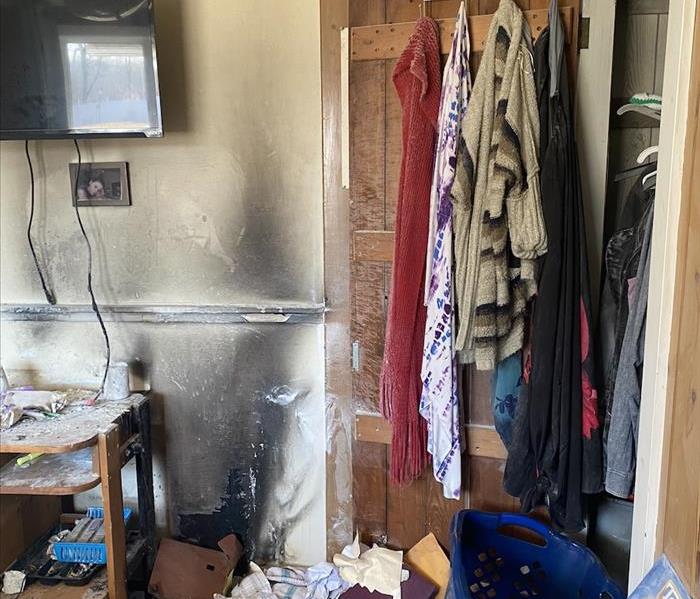Understanding Smoke Damage for Fire Restoration in New London
7/5/2022 (Permalink)
 Smoke damage restoration is no easy task. SERVPRO will be on-site within 4 hours of the initial call.
Smoke damage restoration is no easy task. SERVPRO will be on-site within 4 hours of the initial call.
Smoke Can Be a Formidable Fire Restoration Hurdle
Fires are universally damaging and threatening situations for homes and businesses alike. Smoke can impact the home in many ways, both during the combustion of materials in the house and after the fire gets extinguished. Our focus as an experienced restoration company is to help manage the damage that smoke can do and return your property to preloss condition.
What is Smoke?
Fire restoration for New London properties centers around the impact of smoke. But what is smoke? This is a byproduct of combustion when burning materials decompose into gas and solid particles. This combination becomes aerosolized, and the particles stay suspended in the environment until they adversely impact the residence.
What Impacts Combustion Rates?
The pace at which materials burn and the degree to which these elements get destroyed plays a part in how much smoke and related soot damage SERVPRO professionals must address. Several factors can influence the combustion rate with materials, such as accelerants being introduced during the burn or atmospheric conditions causing fire to move at a slower, smoldering pace. The event conditions change the thickness and presence of smoke and soot after extinguishment.
Types of Smoke Damage
Understanding these various smoke types can show where specific restoration and cleaning approaches are best. The same methods are not ideal from one kind to the next and, in some cases, could result in irreparable surface impact.
- Dry Smoke - Produced by high heat fires, characterized by a thin and chalky residue.
- Wet Smoke - Moist, thick residual deposits that solvents must often remove.
- Furnace Puffback - Ionized soot damage from an oil furnace that often appears like black spider webs.
After fires, restoration should begin as soon as possible to overcome the many types of smoke damage. SERVPRO of New London can help. Call us today at (860) 443-2222.






 24/7 Emergency Service
24/7 Emergency Service